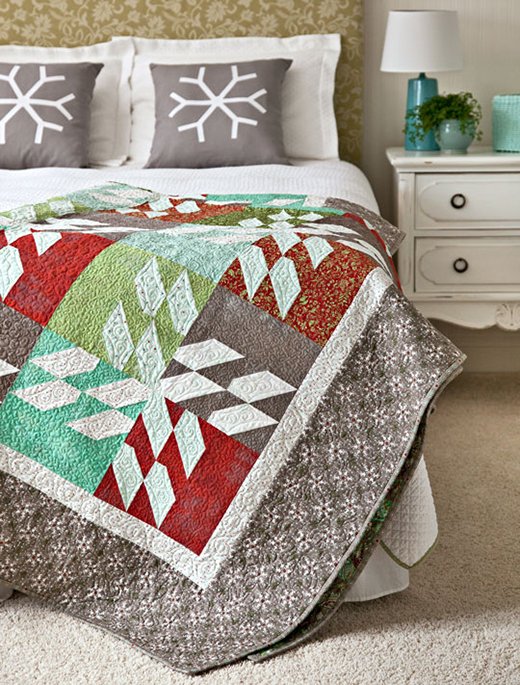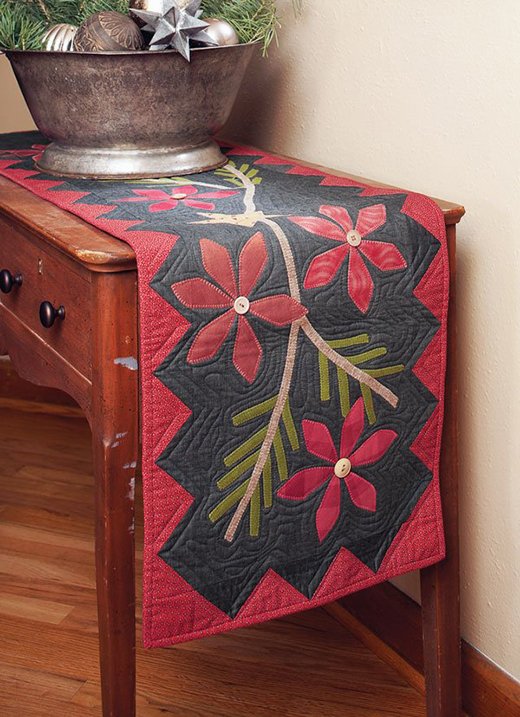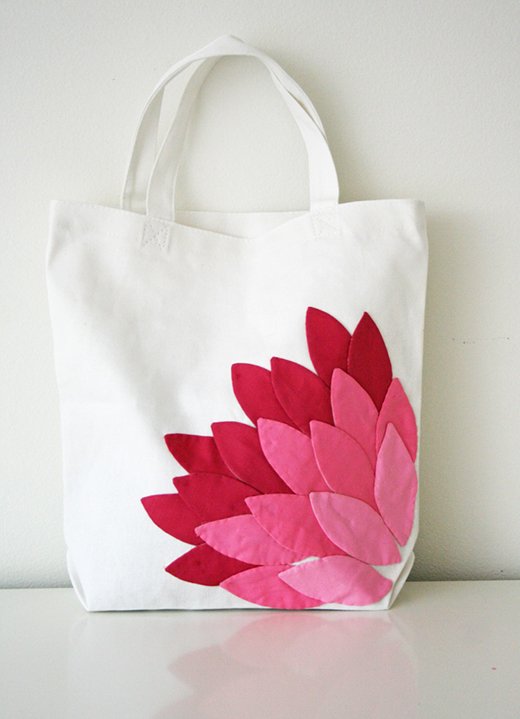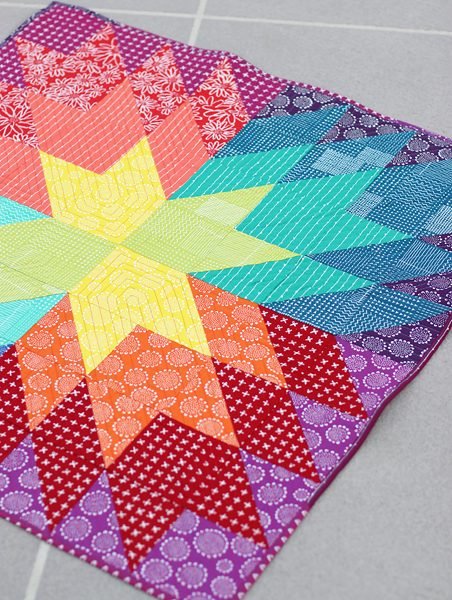When I first discovered the art of quilting, I was captivated by the way simple pieces of fabric could transform into stunning works of art.
Each quilt I made told a unique story, a blend of colors and patterns that echoed moments of inspiration in my life.
One particularly memorable project was the “Blooming Blocks Wall Hanging.”
This quilt, with its intricate pattern of vibrant blooms, reminded me of the gardens I used to explore during my childhood summers, each flower a burst of color and life.
Blooming Blocks: A Canvas of Fabric Flowers
The “Blooming Blocks Wall Hanging” is more than just a quilt—it’s a painter’s canvas brought to life through the delicate interplay of fabric pieces.
This project combines abstract and artsy prints to create the illusion of flowers in full bloom, balanced by a palette of yellows, pinks, dark purples, and greens.
The inspiration behind this quilt comes from the Garden Medley collection by Susie Johnson, and its design evokes a sense of serenity and artistic expression.
The Art of Color Balance
One of the most fascinating aspects of the “Blooming Blocks Wall Hanging” is the careful balance of colors.
The quilt features a harmonious blend of light peach, yellow, blue, and purple prints, set against darker prints to create depth and contrast.
This balance is crucial in achieving the visual impact of the blooming flowers, making each block a vital part of the overall composition.

Full Pattern: Click Here
Materials
To begin this project, gather the following materials:
- 3/4 yard total assorted light peach prints (blocks)
- 1/2 yard total assorted light yellow prints (blocks)
- 3/8 yard total assorted light blue prints (blocks)
- 1/4 yard total assorted light purple prints (blocks)
- 2-5/8 yards total assorted dark prints (blocks)
- 1/2 yard yellow print (inner border)
- 1 yard purple floral (outer border)
- 1/2 yard dark purple print (binding)
- 3-1/2 yards backing fabric
- 61×71″ batting
Finished quilt: 53×63″
Finished block: 10″ square
Note: Yardages and cutting instructions are based on 42″ of usable fabric width. Measurements include 1/4″ seam allowances. Sew with right sides together unless otherwise stated.
“Preparing to Bloom: Initial Steps and Tips”
Before diving into the assembly, it’s important to prepare all your materials and organize your workspace. Ensure you have a clean, flat surface for cutting your fabric, and keep your sewing machine and tools within easy reach. Pre-wash and iron your fabrics to avoid any shrinkage or distortion later on. As you cut the pieces, label them to keep track of the various components, which will make the assembly process smoother.
Step-by-Step Instructions
Assemble Blocks
- Gather Pieces:
- For one block, gather four 3-1/2×5-1/2″ rectangles from one light print and one 4-1/2×10-1/2″ rectangle, four 3-1/2″ squares, and four 2-1/2″ squares from one dark print.
- Mark Diagonals:
- Use a pencil or white dressmaker’s pencil to mark a diagonal line on the wrong side of each dark print 3-1/2″ and 2-1/2″ square.
- Create Rectangle Units:
- Align a marked dark print 3-1/2″ square with one end of a light print 3-1/2×5-1/2″ rectangle. Sew on the drawn line, trim the excess, leaving a 1/4″ seam allowance, and press open the attached triangle.
- Align a marked dark print 2-1/2″ square with the opposite end of the light print rectangle. Stitch, trim, and press as before to make a rectangle unit. The unit should still measure 5-1/2×3-1/2″ including seam allowances.
- Form Flower Units:
- Repeat the previous steps to make four matching rectangle units. Sew these units together in pairs, press seams in opposite directions, then join the pairs to make a flower unit. Press the seam in one direction.
- Complete the Block:
- Sew together the flower unit and a dark print 4-1/2×10-1/2″ rectangle to make a block. Press the seam toward the dark print rectangle. The block should be 10-1/2″ square including seam allowances.
- Repeat:
- Repeat steps 1–5 to make 20 blocks in total.
Assemble Quilt Center
- Join Blocks:
- Refer to the Quilt Assembly Diagram. Sew together the blocks in five horizontal rows, rotating blocks as shown. Press seams in one direction, alternating direction with each row.
- Complete Quilt Center:
- Join the rows to complete the quilt center. Press seams in one direction. The quilt center should measure 40-1/2×50-1/2″ including seam allowance.
Assemble and Add Borders
- Inner Border:
- Cut and piece yellow print 2-1/2×42″ strips to make two 2-1/2×50-1/2″ and two 2-1/2×44-1/2″ inner border strips. Sew the long inner border strips to the long edges of the quilt center, then add the short inner border strips to the remaining edges. Press all seams toward the border.
- Outer Border:
- Cut and piece purple floral 4-3/4×42″ strips to make two 4-3/4×54-1/2″ and two 4-3/4×53″ outer border strips. Sew the long outer border strips to the long edges of the quilt center, then add the short outer border strips to complete the quilt top. Press all seams toward the outer border.
Finish Quilt
- Layer and Baste:
- Layer the quilt top, batting, and backing. Baste them together, ensuring all layers are smooth and wrinkle-free.
- Quilt:
- Quilt as desired. You can choose to follow the block patterns or add your own design to enhance the floral illusion.
- Bind:
- Bind the quilt with dark purple print binding strips.
Additional Tips
- Precision Cutting: Ensure all pieces are cut accurately to maintain the quilt’s symmetry and alignment.
- Consistent Seams: Maintain a consistent 1/4″ seam allowance throughout to ensure all blocks fit together perfectly.
- Pressing Matters: Proper pressing of seams can make a significant difference in the final appearance. Press seams in alternating directions to reduce bulk.
- Creative Quilting: Use the quilting process to add dimension and texture to your quilt. Consider floral or leaf motifs to complement the blooming theme.
Conclusion
Creating the “Blooming Blocks Wall Hanging” is a rewarding experience that combines artistic expression with technical skill. As you piece together each block, you’ll see a vibrant garden of fabric blooms come to life. The “Blooming Blocks Wall Hanging” not only showcases the beauty of carefully chosen fabrics and meticulous piecing but also represents the patience and creativity poured into every stitch.
Reflecting on the process, you’ll appreciate how the interplay of light and dark prints creates the illusion of flowers in full bloom, and how each block contributes to the overall harmony of the quilt. The “Blooming Blocks Wall Hanging” is more than just a decorative piece—it’s a testament to your dedication and love for the art of quilting.
Hanging this quilt in your home will serve as a daily reminder of your hard work and the joy that quilting brings. It’s a perfect example of how fabric and thread can transform into a work of art that brightens any space. Take pride in your “Blooming Blocks Wall Hanging,” knowing that it’s a unique creation that embodies both your skill and artistic vision.





